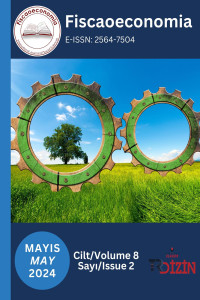Analyzing Türkiye’s Import Dependency of Exports: A Sectoral Approach
Analyzing Türkiye’s Import Dependency of Exports: A Sectoral Approach
Author(s): Serdar VARLIK, N. Hande SEVGİ, Hakan BerumentSubject(s): National Economy, International relations/trade, Financial Markets, Socio-Economic Research
Published by: Ahmet Arif Eren
Keywords: Import Dependency of Exports; Time-Varying Analysis; Kalman Filter;
Summary/Abstract: The high import dependency of exports is an important cause of external vulnerability for economies pursuing an export-led growth strategy. The purpose of this paper is to analyze the import dependency of exports in Türkiye, which adopts the export-led growth model, and to identify the sectors that will contribute to reducing the import dependency of exports. This study investigates Türkye’s time-varying import dependency of exports from January 2013 to January 2024 using ISIC Rev.4 classification and state space model. The findings reveal that while the import dependency of exports was on a downward trend from early 2013 until September 2019, this trend reversed after this date and the import dependency of exports started to increase rapidly. A one percentage increase in the deviation of exports from their potential increases the import dependency of exports by 0.65% on average. The highest import dependence of exports is observed in the Manufacturing sector. When examining manufacturing sub-sectors, Textile, Wearing Apparel and Basic Metals show the highest dependency increase, while Beverages, Tobacco Products and Printing & Reproduction of Recorded Media sub-sectors exhibit the lowest. From this point of view, in order to reduce the import dependency of exports, policies such as increasing export potential, reducing deviations from potential and encouraging vertical integration with the domestic industrial structure, as well as providing tax advantages to encourage the use of domestic intermediate goods especially in sectors with high import dependency can be recommended. Furthermore, technological innovations that allow using domestically produced intermediate goods and capital goods also may create permanent effects on decreasing import dependency.
Journal: Fiscaoeconomia
- Issue Year: 8/2024
- Issue No: 2
- Page Range: 807-824
- Page Count: 18
- Language: English

